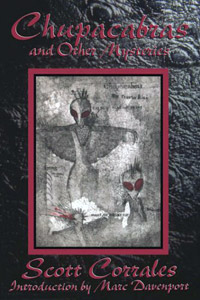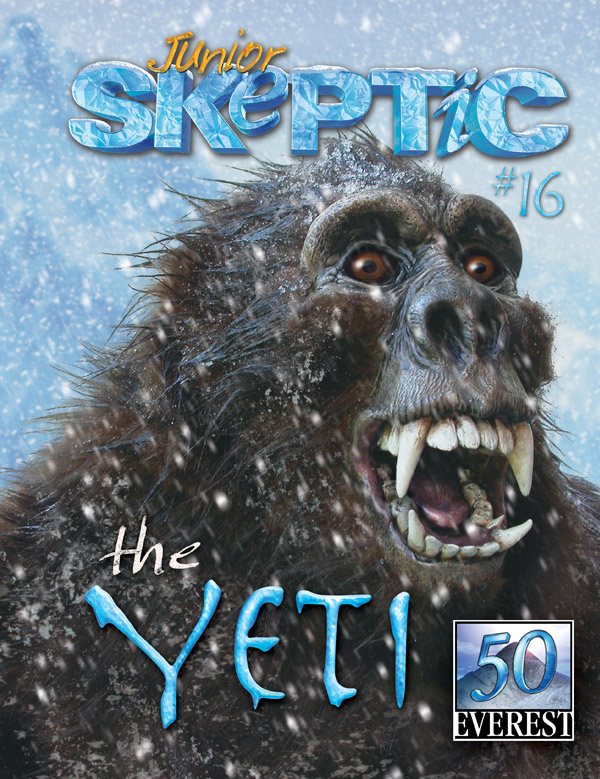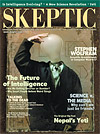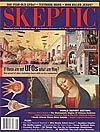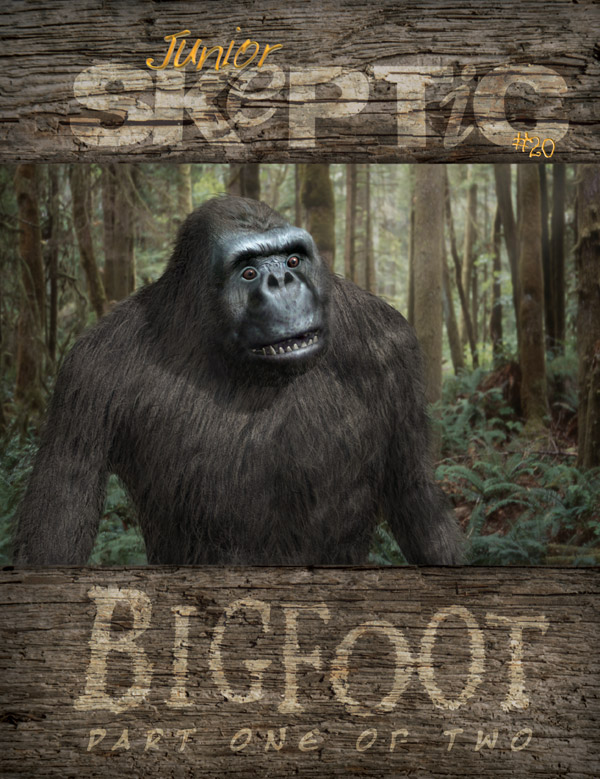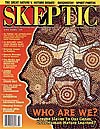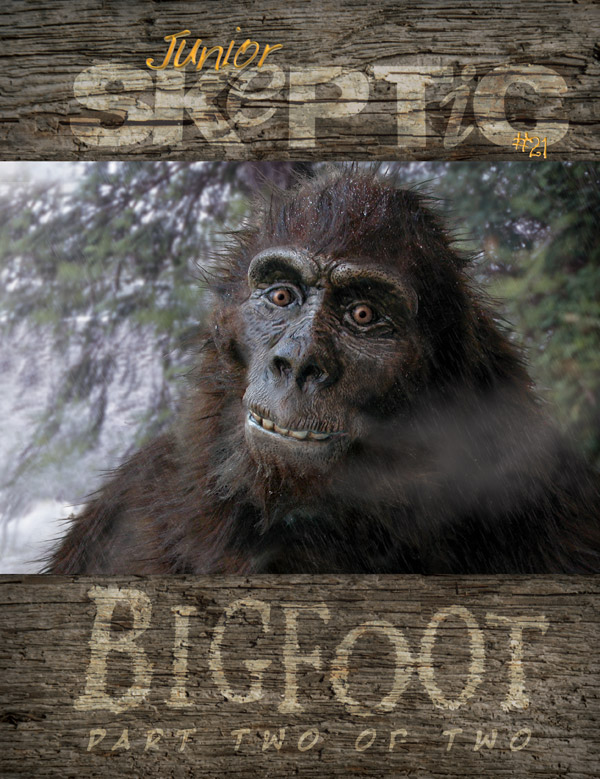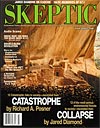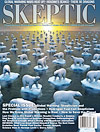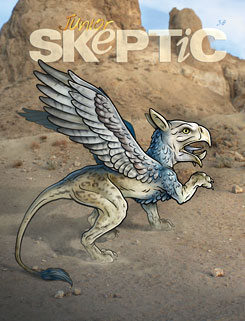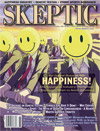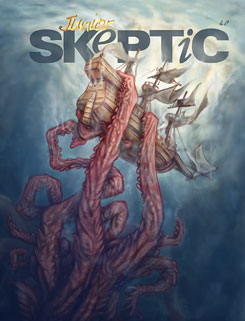In this week’s eSkeptic:
- The Latest Issue of Skeptic magazine: Climate Change Q & A
- Follow Michael Shermer: Where in the world are the atheists?
- Lecture at Caltech this Sunday: Dr. Christof Koch
- Skepticality: Interview with Comedian “Dr. Pete”
- The Amaz!ng Meeting 2012: July 12–15 in Las Vegas, Nevada
- Freethought Alliance Conference: May 19–20 in Irvine, California
- Feature Article: Exposing the Chupacabra: A Morphing Modern Monster
Announcing the Latest Issue
of Skeptic Magazine
TOPICS IN THIS ISSUE INCLUDE: How We Know Global Warming is Real and Human Caused; Special Section on Perception Self-Deception; Special Section on Evidence-Based Medicine; A Historical and Physiological Perspective on a World War II Aviation Mystery; Talking to the Dead: An Empirical Study on the Psychological Aspects of Interpreting Electronic Voice Phenomena; Sleep Paralysis; Energy Medicine and Fantasy Physics; Depression Treatment, and more…
Current subscribers should receive this issue by mid-May 2012.

NEW ON SKEPTICBLOG.ORG
Atheist Nation
Where in the world are the atheists? That is, in what part of the globe will one find the most people who do not believe in God? In this week’s Skepticblog, Michael Shermer shares some statistics collected and crunched by Tom W. Smith of the National Opinion Research Center (NORC) at the University of Chicago, in a paper entitled “Beliefs About God Across Time and Countries,” produced for the International Social Survey Programme (ISSP) and released on April 18, 2012.
Lecture this Sunday at Caltech:
Dr. Christof Koch

Consciousness: Confessions of a Romantic Reductionist
Sunday, May 13, 2012 at 2 pm
Baxter Lecture Hall
WHAT LINKS CONSCIOUS EXPERIENCE OF PAIN, joy, color, and smell to bioelectrical activity in the brain? How can anything physical give rise to nonphysical, subjective, conscious states? Neuroscientist Christof Koch has devoted much of his career to bridging the seemingly unbridgeable gap between the physics of the brain and phenomenal experience. Koch recounts not only the birth of the modern science of consciousness but also the subterranean motivation for his quest—his instinctual (if “romantic”) belief that life is meaningful…
NEW ADMISSION POLICY FOR BAXTER HALL
Due to security concerns, Baxter Hall will be locked and the audience will be admitted only through the doors on the South side of the building by the lily ponds. If, for medical reasons, you cannot climb the stairs to the hall on the 2nd floor, someone at the main entrance (located in the middle of the West side of the building) will escort you to the elevator.
TICKETS are first come, first served at the door. Seating is limited. $8 for Skeptics Society members and the JPL/Caltech community, $10 for nonmembers. Your admission fee is a donation that pays for our lecture expenses.
Followed by…
The Secrets of Mental Math: The Mathemagician’s Guide
to Lightning Calculation and Amazing Math Tricks
with Dr. Art Benjamin, Sunday, June 10, 2012 at 2 pm
Baxter Lecture Hall, Caltech, Pasadena, CA

Interview with Comedian “Dr. Pete”
SKEPTICALITY EPISODE 182

When it comes to certain topics, people sometimes seem to turn a blind eye to the evidence and research that have been collected over the past few hundred years of systematic inquiry. Can comedy bring a bright candle to ideas that other methods struggle to illuminate?
In this episode of Skepticality, Derek welcomes a special in-studio guest, Dr. Peter Ludovice (a.k.a. “Dr. Pete”), a popular stand up comedian who performs his show with a twist of science and rational thinking. Ludovice, also an Associate Professor of Chemical and Biomolecular Engineering at Georgia Tech, discusses how he uses his interesting mix of professions to reach out to his students and audiences across the United States.
Announcing The Amaz!ng Meeting 2012
Southpoint Hotel & Casino, Las Vegas, NV
July 12–15, 2012
THE AMAZ!NG MEETING (TAM) is an annual celebration of science, skepticism and critical thinking. People from all over the world come to TAM each year to share learning, laughs and the skeptical perspective with their fellow skeptics and a host of distinguished guest speakers and panelists.
The James Randi Educational Foundation (JREF) has hosted its annual Amaz!ng Meeting since 2003 as a way to promote science, skepticism and critical thinking about paranormal and supernatural claims to the broader public. TAM has been held in Las Vegas, NV since 2004 and has become the world’s largest gathering of like-minded science-advocates and skeptics.
With yet another incredible lineup of speakers, hands-on workshops, and entertainment, this is sure to be an Amaz!ng Meeting you won’t want to miss! Check out the entire program, and follow @jref on Twitter for the latest #TAM2012 news and announcements.
JOIN FREETHINKERS AT THE THIRD ANNUAL conference of the Orange County Freethought Alliance, May 19–20 2012, at the University of California, Irvine.
SECULAR SPEAKERS INCLUDE: Robert Price, Phil Zuckerman, Dave Silverman, Aron Ra, Richard Carrier, Jim Underdown, Barbara Forrest, Brian Dunning, Mr Deity, Dan Barker, Edward Tabash, Dave Richards, Heina Dadabhoy, and Michael Shermer.
This two-day conference is divided into Saturday’s afternoon/evening sessions and Sunday’s morning/afternoon sessions. You may purchase a one-day ticket for either day or a two-day ticket.
About this week’s eSkeptic
In this week’s eSkeptic, Sharon Hill reviews Benjamin Radford’s latest book, Tracking the Chupacabra: The Vampire Beast in Fact, Fiction, and Folklore. The book was nominated as a Finalist for the 2011 ForeWord Reviews’ Book of the Year Award in the social science category, and was a Finalist for the New Mexico Book Awards.
Sharon Hill is a skeptical writer and blogger specializing in topics connecting science and the public. She has a personal web site “Doubtful” which covers topics of general skeptical goodness and runs the critical thinking newsblog, Doubtfulnews.com. The Doubtful NewsBlog is syndicated hourly, right here on skeptic.com.
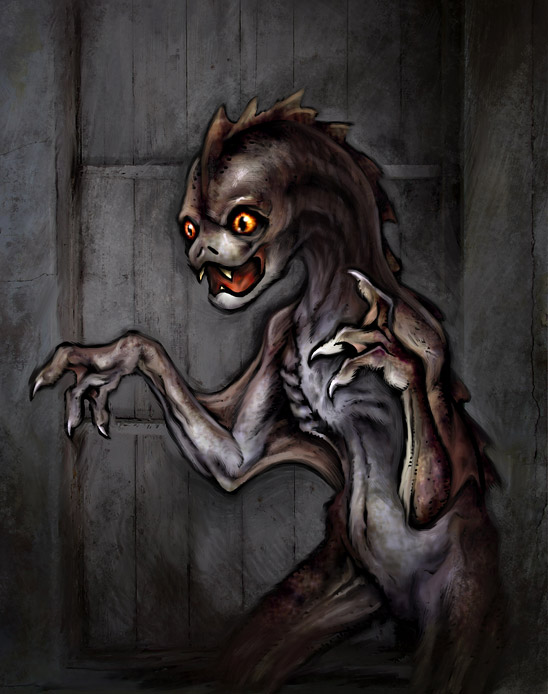
Exposing the Chupacabra:
A Morphing Modern Monster
by Sharon Hill
The paranormal explanation can be the quick, easy and popular route to go compared to the genuine one, which is far more complex. We, as a culture, create our monsters to suit us, smearing the line between fiction and reality, paranormal and normal, as needed. That’s what Tracking the Chupacabra: The Vampire Beast in Fact, Fiction and Folklore is about. Author Benjamin Radford admits this book is not actually about the “monster” called “chupacabra”1 but about how folklore becomes real, how humans tell and receive stories, and how memories can be wrong. In this comprehensive examination, Radford shows us that “chupacabra” is not an explanation for a specific phenomenon; it’s a convenient scapegoat utilized in circumstances perceived as threatening or bizarre.
Descriptions of the chupacabra as a real creature are problematic. Its chameleon-like, shape-shifting nature became one of its hallmarks. The tale of the monster begins with livestock attacks in Puerto Rico in 1995, which is explained in part one of the book. The animals were found reportedly drained of blood. An unidentified, mysterious vampiric killer was on the loose and the media embraced the story. Naming the creature “chupacabra” (goat sucker) brought it into being. Confusion over its physical description finally sharpened in response to the widely publicized description by witness Madelyn Tolentino. Her story is scrupulously examined in the key chapter of the book, Chapter 7, where Radford concludes that Tolentino’s recollections and interpretations hold the key to solving the mystery of the chupacabra. Based on the Tolentino report, the chupacabra was an otherworldly humanoid with spines, claws, red eyes and a curious hopping locomotion. A subsequent second body form associated with the chupacabra was smaller, essentially hairless and dog-like. This type was based upon actual animals killed in proximity to livestock attacks. They appeared far too grotesque to be common fauna. A third bin of creatures labeled “chupacabra” was filled with any unusual thing regardless of size, number of limbs and body shape. If one couldn’t identify a creature right away or affirm that it was a recognized animal, it was called chupacabra.
Prior to Radford’s book, there was only one other volume dedicated to the subject—Scott Corrales’ Chupacabras and Other Mysteries.2 Corrales’ work is a collection of chupacabra-related incidents including encounters (reported in the local press and some obtained directly by the author), livestock attacks and UFO reports. Presented as a diary through the years where the legend blossomed and spread, Corrales’ book connects the chupacabra stories to interpretations in terms of UFOs and alien visitation. Corrales’ book is a collection of tales, uncritical of eyewitness’ testimony and paranormal explanations. Radford, as a scientific and skeptical investigator, launches from a foundation based on collected evidence. The intent of his quest is to solve the mystery, not to promote it. This is a fundamental difference between the few genuinely useful cryptozoological references and the profusion of popular, often speculative, monster books which rehash anecdotes without scrutiny or analysis.
In multiple approaches to the chupacabra enigma, Radford explores the following topics: vampires and other blood-eating animals, folklore, mass hysteria, cultural influences and socioeconomic factors, sarcoptic mange and canid genetics, animal deaths and postmortem effects, and the trouble with eyewitness reports and making unsupported assumptions.
In an intriguing part two, Radford discusses the cultural aspects, considering vampires across cultures and the metaphor of a society sucked dry by outsiders. “It is undoubtedly true,” he writes, “that the chupacabra drew much of its notoriety and power from the fabric of Puerto Rican culture, society and politics” (page 37). The fertile meme of a modern blood-sucking monster spread all over the world thanks to the new Internet age. The chupacabra became a pop culture icon and the star of books and movies.
In spite of many critics’ claims to the contrary, Radford concludes that the creature sprang into existence in 1995. It simply didn’t exist before this. In order to test his claim, Radford publicly offered a $250 reward for anyone who could provide a written reference of the chupacabra (as we now know it) dated prior to 1990. Four months later, he reported to me he received no dated references.
Part three is the search for the beast in the flesh. This book is an example of how thorough investigation works. Assuming that monster (or any other wild) stories are literally true is not research; one needs to question and go under the surface, pick it apart. To do this, Radford went to great lengths: trekking into the Latin American jungles to search for traces of a live one, exposing the exaggerations by witnesses and the shabby scholarship by reporters, and examining a frozen severed head of a supposed chupacabra. Investigation clearly isn’t pretty or always fun. Cryptozoologists almost never obtain a body, yet in the case of the chupacabra, many carcasses were put forth for examination. Typically missing hair, with odd-colored skin and strange dentition, tests showed that they were dogs, coyotes and even a raccoon—normal species suffering from sarcoptic mange and perhaps other related illnesses. They looked abhorrent but they were not unknown to science.
In part four, Radford questions the origin of the chupacabra in consideration of all the evidence and extraordinary claims. Strange events don’t occur in a vacuum, he notes. Indeed. Radford puts forth convincing connections to show that the origin of the mysterious chupacabra had very Hollywood connections and was distorted through human foibles. Circumstances came together in the construction of the narrative that brought a blood-sucking monster to life in Latin America and the southern United States. The final chapter is a surprisingly fundamental piece—a look into the zoology of actual blood sucking/eating animals. I had never seen the obvious problem pointed out before: dog-like animals can’t suck. It takes specialized physiology to do so. Curiously, we can observe the “vampire” characteristic falling away from the recent (and ongoing) flap of hairless dog-like reports of chupacabras. Our pop culture beast continues to evolve.
Eyewitnesses in the chupacabra story believed something out-of-the-ordinary had happened to them. When testing and solid evidence showed that carcasses were a sickly coyote or domestic dog, or that their livestock were most likely killed by dogs instead of a frightening vampire beast, they rejected that explanation. Instead, they sought only that which confirmed their belief. They embraced fantastic tales of a mutant, hybrid or government plot. Some preferred to blame extraterrestrials or Satan himself. Too often, they invented elements to make it fit their perception. When a person has a good bit invested in a story, they will not readily exchange it for a mundane explanation. Fact be damned—they know otherwise. Thus, the most powerful lesson reinforced by Radford’s necropsy of the chupacabra legend is one that resonates with those who provide sound, logical explanations for seemingly paranormal explanations…people don’t want to hear the truth. This is the hurdle we face every day as scientific skeptics.
Tracking the Chupacabra is satisfying for those willing to consider a legitimate, evidence-based explanation. If you aren’t happy to do that, this book will make you mad. I’m hard pressed to find any stone unturned in this stunning exposé of the first Internet-age cryptid.
References
- There is dispute about whom to attribute the first use of “chupacabra” or “chupacabras” or “el chupacabras”. Radford sticks with the most straightforward moniker that translates to “goat sucker”.
- Corrales, Scott (1997). Chupacabras and Other Mysteries. Greenleaf Publications. 248p.
Suggestions for Further Reading on the Topics of Cryptozoology and Paranormal Investigation…
-
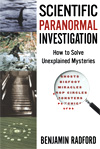 Scientific Paranormal Investigation
Scientific Paranormal Investigation
by Benjamin Radford
Monsters in Junior Skeptic magazine…
Bound into every issue of Skeptic magazine, Junior Skeptic is an engagingly illustrated science and critical thinking publication for younger readers.
Junior Skeptic is our flagship educational periodical, written for both the young and the young at heart. In each issue, readers are invited to consider the background, concepts, and arguments surrounding a major paranormal claim (such as the Bermuda Triangle, or Bigfoot). Junior Skeptic explores the best evidence in support of these claims, but also exposes where thinking went wrong—and how. Accessible but not simplistic, Junior Skeptic has often gone toe to toe with the bigshots of the paranormal world. Add these monsters to your collection…






